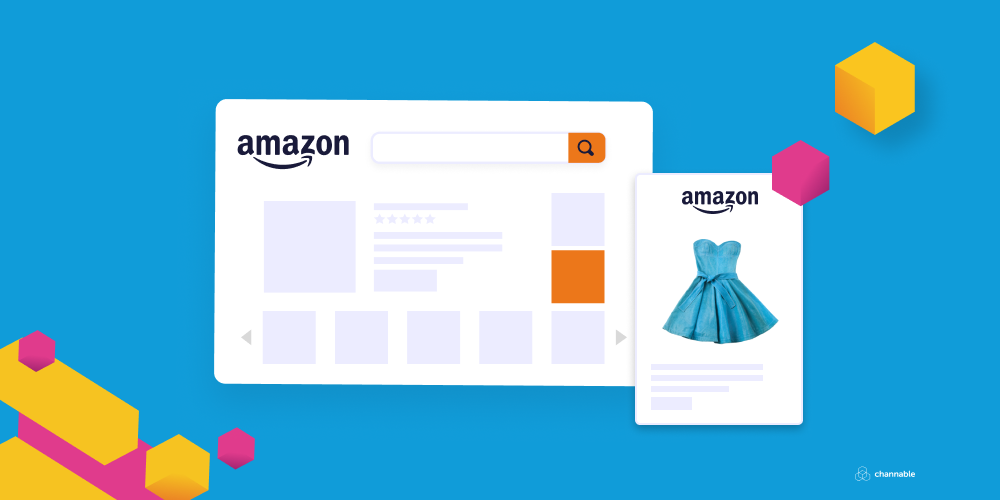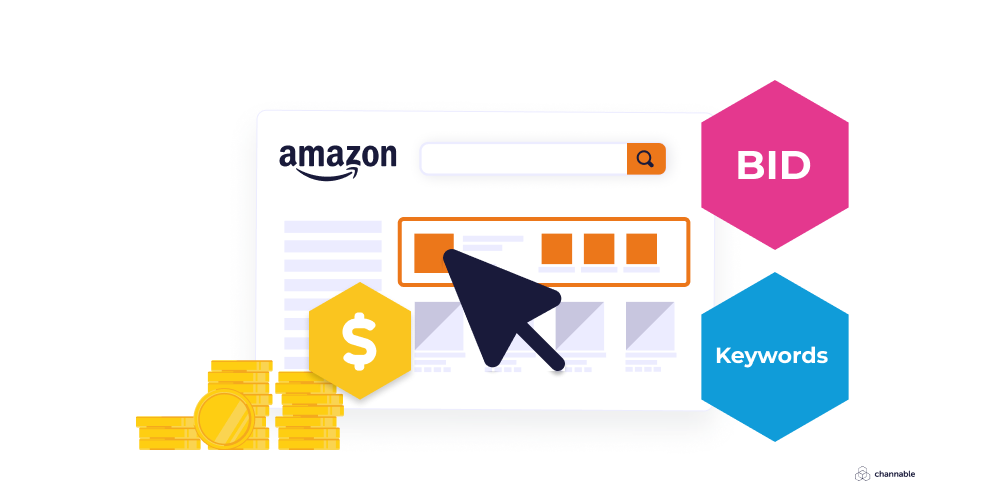7 Expert Tips to Optimize Amazon PPC Campaigns in 2024


Tired of your products getting lost in the vast Amazon marketplace? You're not alone. Even with PPC ads, standing out on Amazon can be a challenge. But fear not, this guide will equip you with proven strategies to optimize your Amazon PPC campaigns and maximize your chances of success.
We'll dive into seven expert tips covering everything from targeting the right keywords to optimizing bids and scheduling budget increases during peak conversion windows. By following these Amazon PPC strategies, you'll be well on your way to boosting your visibility and sales on the platform.
1. Optimize your products and detail pages
When shoppers click on your Amazon Sponsored Product ads, they're primed to make a purchase. They've already shown interest in your product, and your product detail page is your prime opportunity to convert this interest into a sale. That’s why it's crucial to invest in the quality of your product information as detail pages directly impact your ad performance.
Here are optimizations that you can make to increase your chances of conversions:
Competitive pricing
Research and analyze your competitors' pricing to ensure your products are competitively priced. Remember, even a slight price difference can influence a customer's decision, especially when presented with multiple options.
Compelling product titles
Craft clear, concise, and keyword-rich product titles that accurately reflect your product's value proposition. This not only improves search visibility but also grabs the shopper's attention within seconds of landing on your page.
Leverage the power of reviews
Feature products with a healthy volume of positive reviews and a high average rating. Social proof significantly increases buyer confidence and reduces purchase hesitation.
Showcase your product with high-quality images (and videos)
Include at least 4 high-resolution images from different angles to showcase your product in detail. Also consider including lifestyle images that demonstrate the product in use and, if possible, short product videos.
Highlight key features with bullet points
Use clear and concise bullet points to list the key features and benefits of your product. This makes it easy for shoppers to scan and understand what your product offers, saving them time and effort while navigating the page.
2. Use auto campaigns to find high-performing keywords
If you’re new to Amazon PPC, it’s a good idea to select the automatic targeting feature as it’s the easiest and quickest way to get started. With automatic targeting, Amazon automatically matches your ads to keywords and products, saving you time compared to manual targeting.
But you can also use auto campaigns to discover high-performing keywords that you can use to improve the performance of your Amazon PPC campaigns. Once your auto campaign has been running for a while, analyze the search term report to find the specific search terms people used to find your product through your ads.
For instance, imagine you sell women’s yoga pants. You might find a term like "women's high-waisted yoga pants with pockets" has driven a significant number of sales at a low cost per sale (ACoS).
You can then add this keyword as an exact match phrase in your manual campaign. This Amazon PPC strategy ensures that your ad only appears on searches containing the exact phrase, maximizing your chances of reaching highly relevant and likely-to-convert customers while potentially reducing unnecessary ad spend.
3. Maximize your ad spend with negative targeting
Another smart Amazon PPC strategy is negative targeting. Neglecting negative targeting can drain your ad budget on unproductive keywords that take impressions away from high-performing search queries. Additionally, these keywords might be attracting irrelevant searches with high impressions but zero clicks, or even generating clicks that never convert into sales.
Negative keywords
Negative keywords are words or phrases that prevent your ads from showing up for irrelevant searches, preventing you from wasting budget on product type mismatches like "boots" when you sell "hiking boots."
Negative targeting
This allows you to exclude specific products or brands in your campaign. This is useful to filter out competitors, avoid brand mismatches (e.g. excluding a craft brand with the same name as your clothing brand), or simply to prevent your ads from appearing for irrelevant searches. Amazon also allows you to add specific ASINs (Amazon Standard Identification Numbers) to your negative targeting list.
4. Increase ad spend during peak conversion windows
As your Amazon Sponsored Product ads gain traction, you can drive more conversions by optimizing your budget strategy. This involves scheduling your ad spend strategically to hit peak conversion windows.
Your Seller Central account's sales dashboard is a treasure trove of valuable data. You can identify the days and times when you get the most sales. By increasing your budget during these peak times, you can ensure your ads reach potential buyers at the exact moment they're most likely to make a purchase.
You can also increase your budgets during special events such as Prime Day, Black Friday / Cyber Monday, and any other seasonal holidays. To create or update rules for existing campaigns, click the campaign name in the “Budget rules” tab within the campaign manager.
Advanced Amazon PPC strategy: Amazon also allows you to set rules to increase your Sponsored Products campaign budgets when your campaigns meet a certain performance threshold using campaign performance metrics such as advertising cost of sales (ACoS), click-through rate (CTR) and conversion rate (CVR). For example, you can set up performance-based rules to increase your budget by 20% if your return on ad spend (ROAS) is greater than 5.
5. Fine-tune your cost-per-click (CPC) for best results
Adjusting your cost-per-click (CPC) bids is another optimization strategy for your Amazon PPC campaigns. While this can only be done via manual campaigns, it gives you more control over how much you bid for each keyword. This ideal price can vary for each word, so you can adjust them individually in your campaign settings. It's important to wait a while after making changes to see how they perform, as you need enough data to make smart decisions.
Here are some general guidelines:
- If a keyword is costing you more than you'd like (high ACoS), try lowering the bid to see if it gets cheaper clicks and sales.
- If a keyword is performing well (low ACoS), try raising the bid to see if you can get more people to see your ad and buy your product.
- If a keyword isn't getting any sales or views, increasing the bid might make it more visible and effective.
- If a keyword just keeps costing you money without any sales, it might be best to stop using it altogether.
6. Use dynamic pricing to improve conversion rates
Dynamic pricing is an Amazon PPC optimization strategy that involves continuously adjusting your product prices based on factors such as demand, competition, and current market trends. While dynamic pricing can help you win the Buy Box and boost organic sales, it can also increase your PPC conversion rates by ensuring that your products are competitively priced. This can potentially lower your cost-per-acquisition (CPA) and return on ad spend.
If you have multiple products and SKUs, you’ll need a dynamic pricing tool to automate this process. Channable’s Amazon Repricer automatically adjusts your prices in real-time to match (or beat) your competitors based on if/then rules.
7. Bonus: Optimize your Amazon ad campaigns with Channable’s feed management and PPC tool
Optimizing your Amazon PPC campaigns can significantly boost your sales and lower your ACoS. But managing these campaigns can be time-consuming and complex, especially if you have multiple products and ad groups. That’s where Channable can help.
Channable’s Amazon API is part of Channable's end-to-end marketplace solution, making it even easier for advertisers to access the benefits of Amazon PPC adverts. It syncs your webshop with Amazon and automatically keeps your product information and stock count up-to-date. Products purchased via Amazon update automatically in your webshop letting you handle all orders from one place. This means that you can quickly fulfill Amazon orders to keep customers happy.
Additionally, our PPC tool specifically designed for Amazon Ads allows you to easily create complete ad campaign structures for multiple products and languages at scale. Our tool also uses automation to maximize your return on investment and avoid overspending:
- Campaign and keyword automation rules: You can set up rules that will automatically adjust your bids, add or remove keywords, move keywords between campaigns, or blacklist certain keywords based on specific criteria.
- Bid automation tools: Our tool automatically adjusts your bids based on real-time data, such as keyword performance and real-time metric data (e.g. ROAS, ACoS).
Ready to optimize and automate your Amazon Ads? Sign up for a free trial to see what Channable can do for you.
Want more like this?
Want more like this?
Insight delivered to your inbox
Keep up to date with our free email. Hand picked whitepapers and posts from our blog, as well as exclusive videos and webinar invitations keep our Users one step ahead.
By clicking 'SIGN UP', you agree to our Terms of Use and Privacy Policy


By clicking 'SIGN UP', you agree to our Terms of Use and Privacy Policy
Other content you may be interested in

Want more like this?


Want more like this?
Insight delivered to your inbox
Keep up to date with our free email. Hand picked whitepapers and posts from our blog, as well as exclusive videos and webinar invitations keep our Users one step ahead.
By clicking 'SIGN UP', you agree to our Terms of Use and Privacy Policy













